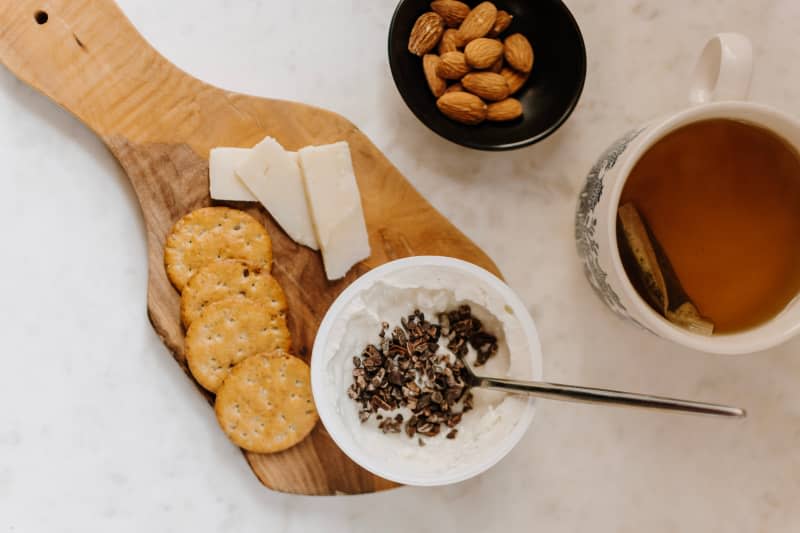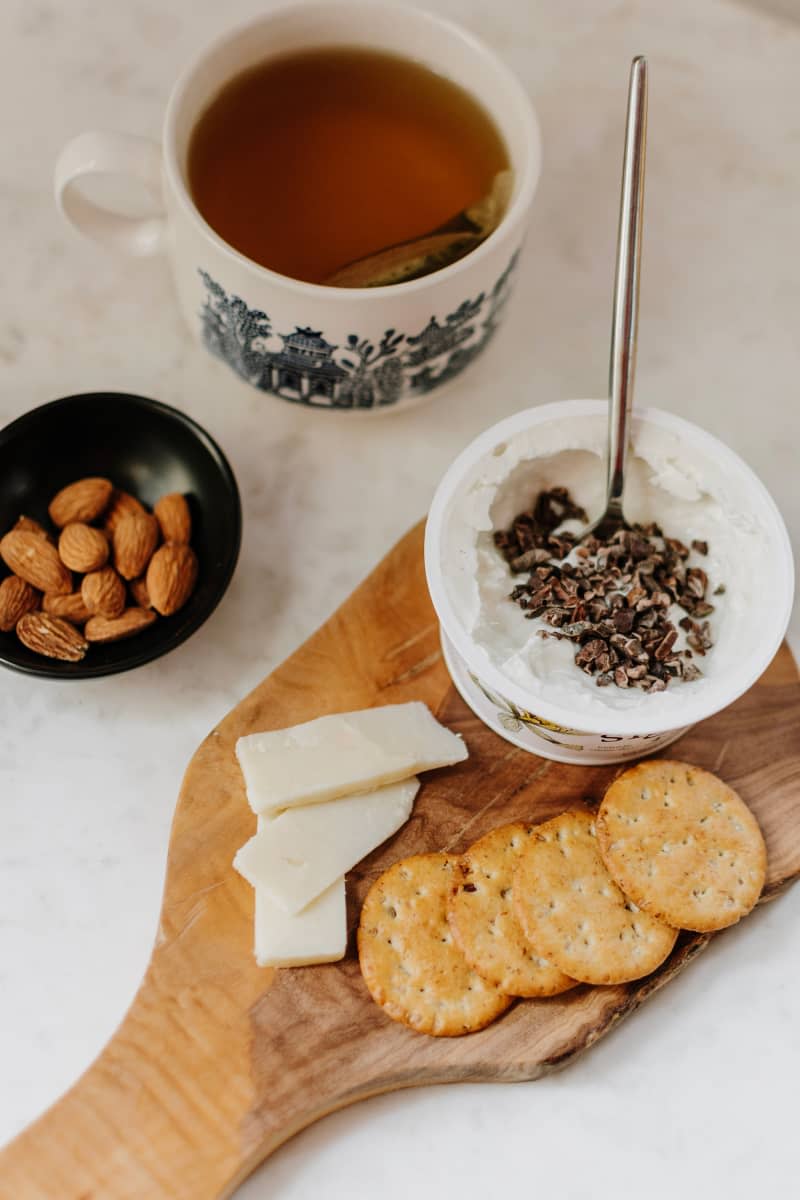The "Petite" French Habit That Is Making My WFH Days So Much Sweeter

In France, goûter means “to taste.” It’s a fitting word used to describe the light afternoon snack that children often eat in that downtime between arriving home from school and sitting down for dinner. It’s later than what you often think of as snack time — eaten somewhere between 4 and 5 p.m.
And it’s been an essential part of my routine for years. Each day, I’ll break for a snack time that arrives just an hour or so before I shut my computer to head out to an evening workout class. It’s my cue that the workday is almost done, a little treat to ease into the transition, and ward off any work-from-home burnout.
But now that I know it has its roots in a French tradition, it’s bringing even more joy to those long WFH afternoons — particularly when the sun sets early.
What Is an Afternoon Goûter?
Typically, goûter is a late-afternoon snack designed to quell those hunger pangs that set in between lunch and dinner. In the United States, you might have a handful of nuts or a granola bar around 2 to 3 p.m. But in France it’s a croissant, a yogurt, cheese and crackers, or a piece of fruit around 4 p.m, often accompanied by a cup of tea or coffee. Think of it as bigger than a grab-and-go snack, yet smaller than a full meal. While it may be an after-school ritual for French kiddos, for me it’s a little indulgence to give myself one last push before the end of the workday.

How I’m Embracing Le Goûter
For years, I was having a goûter each afternoon without even realizing it. I’d cut a few pieces of cheese, grab a few crackers, peel an orange, and make a hot cup of tea (or, if the afternoon called for it, a second latte).
However, as a self-described Francophile, I’ve used my newfound knowledge of goûter as a concept to add a little more flair to my WFH wind-down ritual. The basic pieces remain the same — cheese, crackers, maybe a baguette or pastry if I have it on hand, yogurt, tea — but I’m presenting them in a way that feels like an occasion rather than a quick means to an end.
I take the time to pull out a plate or a small cheese board. I add a flourish to the yogurt — sometimes with granola, cacao nibs, honey, or dried fruit. I put a handful of nuts in a small serving bowl. I make sure to use a pretty vintage mug for the tea. If I’m going to have a snack, why not make it feel intentional, pretty, and oh-so French?
It’s often said that the secret to living as the French do is making the most of the small moments, using beautiful items, and not deeming anything too special for the everyday routine. I like to think that same mindset can apply to goûter. It’s taking a few minutes to slow down and focus during the rush of the afternoon when I’m often just trying to make it to the end of the workday. Goûter feels like a break — like a minute for myself as I celebrate the almost-end of the day. It’s not pouring another cup of black coffee and putting it in the microwave or grabbing a bar from the pantry. It’s making my afternoon snack ritual a more mindful, luxurious experience that sometimes has me feeling like I’m not in my kitchen at all but rather a little bistro on some charming French street.

